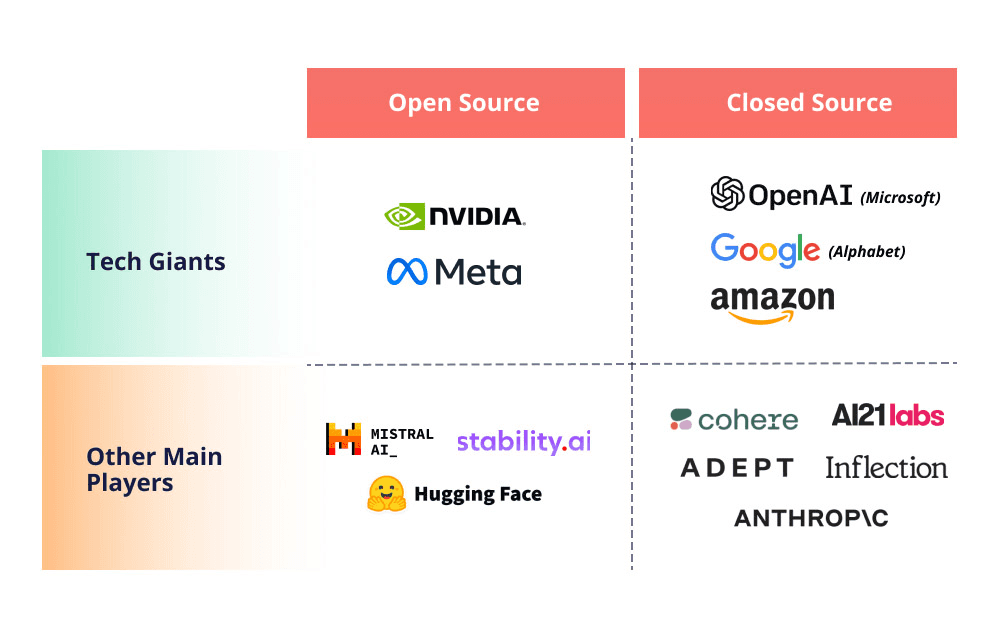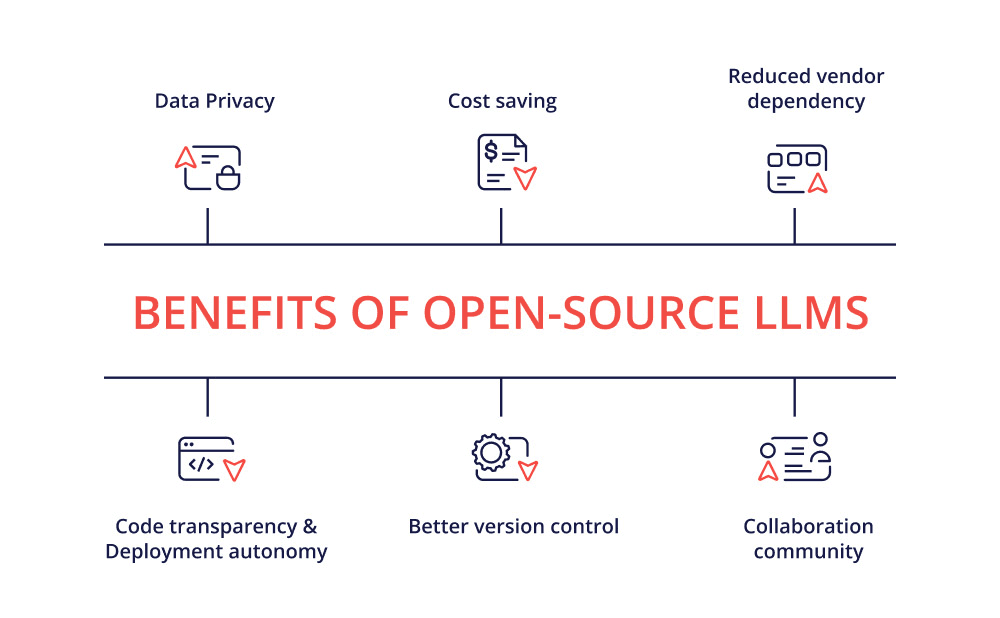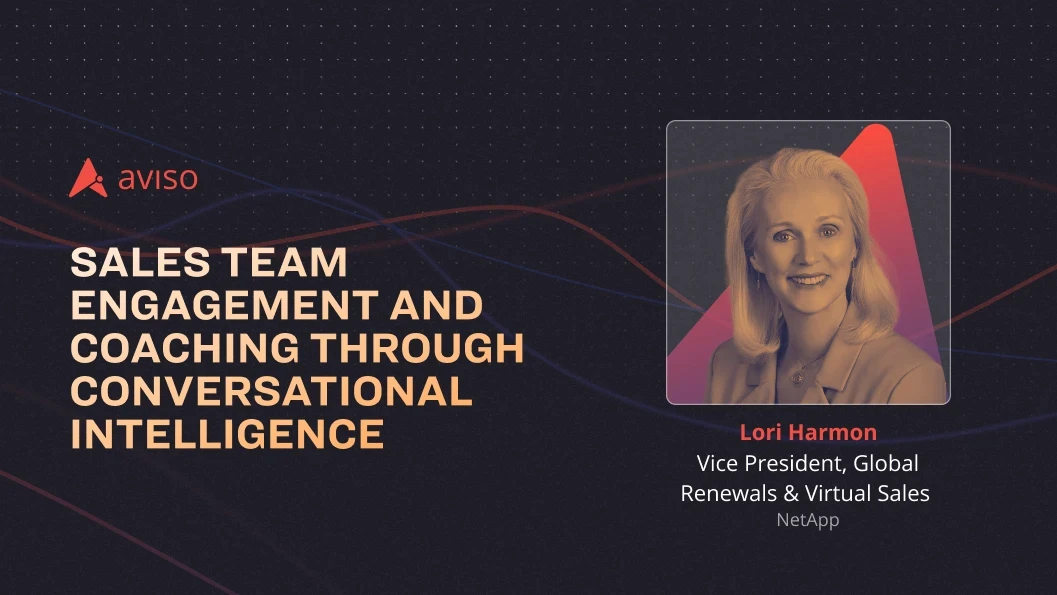Open-Source versus Closed-Source Models: Dynamics Shaping the Landscape of AI in Sales Forecasting
Feb 7, 2024
Navigating the dynamic landscape of sales demands a strategic blend of customer interactions, data-driven insights, and tailored solutions. To accomplish this, the rush to leverage the growing interest surrounding Large Language Models (LLMs) leads us to a market flooded with a multitude of options.
The breakthroughs and research in the area of Generative AI have sparked a debate challenging the dominance of tech giants like OpenAI and Google, mainly due to their enclosed ecosystems. A major catalyst for this storm was the release of the open-source LLaMA model and its successor by Meta AI, diluting the aggressive advantage of its competitors. Now that the landscape has split wide open, it is crucial to explore the varieties, efficacy, accessibility, best practices, and rationale behind these LLM models in shaping the sales processes.

Currently, the LLM options available fall broadly into two categories:
Closed Source Models: Offered as services by companies like OpenAI, Google, Microsoft, and AWS, these models provide a relatively straightforward deployment, granting organizations access to robust solutions applicable across diverse use cases.
Open Source Models: Showcasing extensive variety, open source models bring numerous advantages, simplifying the process for organizations to identify models aligning with their specific requirements.
Choosing between open-source models and closed-source solutions requires careful consideration of organizational needs, weighing factors such as customization, data privacy, and long-term maintenance, with context playing a crucial role in the decision-making process.
The Practicality of Closed Source Models
One of the hallmarks of closed-source LLM models is that they excel in out-of-the-box performance, making them ideal for users prioritizing immediate and reliable results without extensive customization. The ease of deployment, often packaged as user-friendly services or APIs, caters to those seeking streamlined integration, especially with limited technical expertise. Additionally, pre-training on diverse datasets makes closed-source models versatile for various use cases.
These closed-source model APIs provide a time-saving advantage, speeding up a solution’s transition from conceptualization to market launch. Nevertheless, although rapid achievements are satisfying, sustained competitive advantages often align more with fine-tuned custom models for optimal performance. An open-source LLM offers more flexibility and transparency regarding how it works and helps ensure ethical and legal compliance.
The Innovation Edge of Open Source Models for Sales Insights
In recent years, open-source alternatives have gained much attention. Open-source LLMs are a goldmine of untapped potential, steadily approaching the cutting-edge capabilities of closed-source models. They offer a range of benefits, including increased customizability and context awareness, more transparency in generating outputs, improvement in collaboration, and, majorly, data privacy.
Even though the closed source models offer fine-tuning capabilities, there is a growing concern about data privacy and the increased cost associated with the fine-tuning process. Open-source models empower enterprises to overcome these limitations and offer more capabilities to align the models with unique sales processes, market dynamics, and product/service characteristics.
Key Advantages of Open Source Models for Sales Analytics
Transparency: Open source fosters transparency in model development, enabling businesses to inspect architecture, algorithms, and training data for enhanced trust and understanding, which is critical in AI-driven sales guidance.
Autonomy in Deployment: Open source LLMs provide flexibility for enterprises to deploy models within their infrastructure, ensuring complete control over data and mitigating risks associated with breaches or unauthorized access. This helps overcome privacy threats that might occur with closed-source models; for example, a data infiltration bug was reported in ChatGPT in April 2023 that could potentially leak conversation details to an external URL. Additionally, the lack of disclosure regarding validation details for bug fixes raises uncertainties in closed-source models.
Version Control: We have authority over model updates with open-source models. Consistency in results is more achievable as long as the same model is employed, a contrast to closed source models where control over model updates is absent.
Eliminate Vendor Dependency: With closed-source models, dependency exists on the vendor for updates, support, and ongoing access to the model or service. Such reliance may pose potential risks, particularly in cases where the vendor faces outages, business continuity challenges, or chooses to discontinue the model or service.
Cost-Effectiveness for Fine Tuning: Beyond initial deployment, open source models offer ongoing modifications without licensing fees, contrasting with some closed source models that impose higher charges for fine-tuning jobs.
Collaborative Community: The open source community facilitates collaboration, leveraging collective expertise for accelerated development and improvement of sales forecasting models. Some of the major developments for the LLM landscape include:
Quantized models and Paged Attention techniques with reduced memory usage and superior performance
Extended context length LLM (e.g., YaRN, StreamingLLM) without vast compute and memory resources while preserving the model’s high-quality performance.
Model optimization using human feedback depending on the context, resource availability, and type of available feedback(e.g., RLHF, DPO).

These advantages culminate in more accurate and adaptable sales forecasting processes, ultimately elevating decision-making and enhancing overall business outcomes.
LLM Canvas @ Aviso AI
At Aviso, a blend of closed-source models with prompt architecture and open-source LLM models are utilized depending on the task. Closed source models are leveraged in the platform for generating insights from publicly available data sources such as earnings calls, news feeds, SEC filings, etc. At the same time, open-source models undergo fine-tuning within the platform to generate insights from customer data. This approach aims to customize the model to business needs while ensuring data privacy.
As we are in a time where businesses increasingly prioritize customization, transparency, long-term adaptability, and collaborative development, Aviso's customers are provided with the maximum benefits of Generative AI by making strategic choices for our solutions, placing paramount emphasis on data privacy. This ensures no capability is overlooked, boosting productivity and enabling a more concentrated focus on sales processes.
To know more, book a demo with Aviso today.



